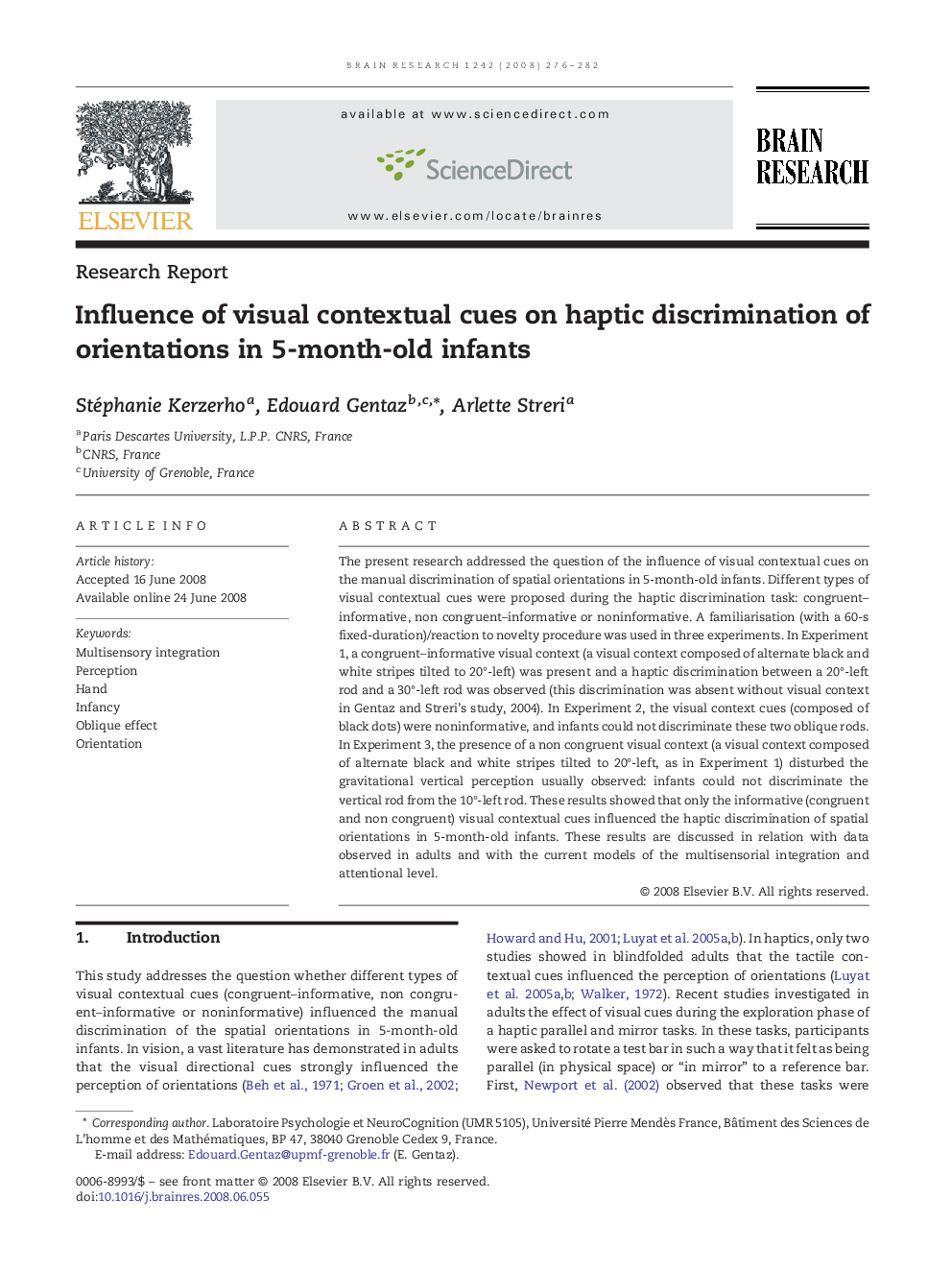| Article ID | Journal | Published Year | Pages | File Type |
|---|---|---|---|---|
| 4328935 | Brain Research | 2008 | 7 Pages |
Abstract
The present research addressed the question of the influence of visual contextual cues on the manual discrimination of spatial orientations in 5-month-old infants. Different types of visual contextual cues were proposed during the haptic discrimination task: congruent-informative, non congruent-informative or noninformative. A familiarisation (with a 60-s fixed-duration)/reaction to novelty procedure was used in three experiments. In Experiment 1, a congruent-informative visual context (a visual context composed of alternate black and white stripes tilted to 20°-left) was present and a haptic discrimination between a 20°-left rod and a 30°-left rod was observed (this discrimination was absent without visual context in Gentaz and Streri's study, 2004). In Experiment 2, the visual context cues (composed of black dots) were noninformative, and infants could not discriminate these two oblique rods. In Experiment 3, the presence of a non congruent visual context (a visual context composed of alternate black and white stripes tilted to 20°-left, as in Experiment 1) disturbed the gravitational vertical perception usually observed: infants could not discriminate the vertical rod from the 10°-left rod. These results showed that only the informative (congruent and non congruent) visual contextual cues influenced the haptic discrimination of spatial orientations in 5-month-old infants. These results are discussed in relation with data observed in adults and with the current models of the multisensorial integration and attentional level.
Related Topics
Life Sciences
Neuroscience
Neuroscience (General)
Authors
Stéphanie Kerzerho, Edouard Gentaz, Arlette Streri,
